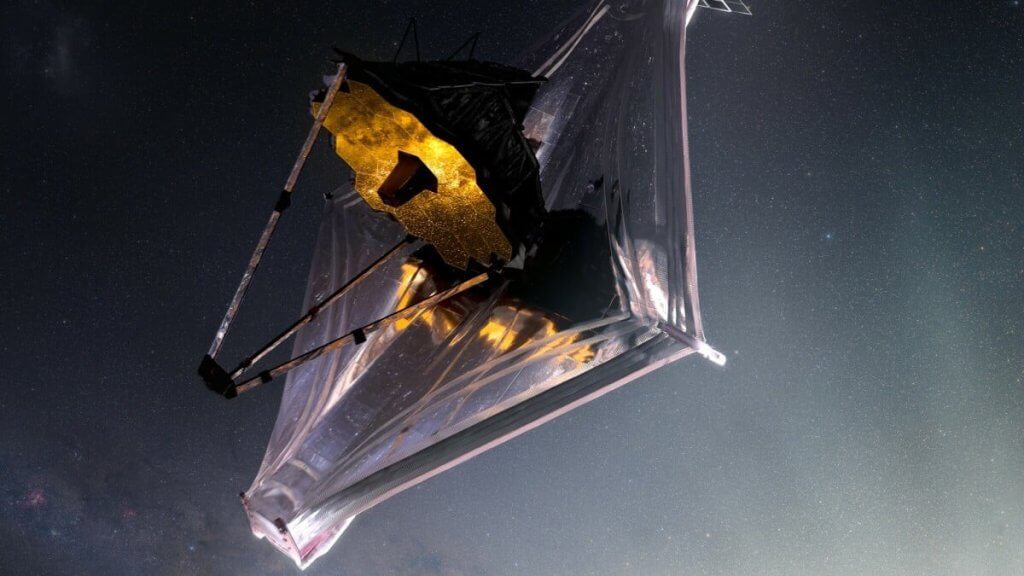If you enjoy holiday light displays, check out this brilliant string of lights illuminating deep space.
Astronomers used the James Webb Space Telescope to observe a “Herbig-Haro object,” formed when a newborn star tosses jets of material back into interstellar space and creates a grand illumination. What they found was a surprise that only Webb’s piercing infrared vision could reveal.
Once thought to be a single baby star doing what baby stars do best — spitting up — this Herbig-Haro object, known as HH 797, is actually the handiwork of two stars that are so close together in the sky, they appear to be one. Cosmic experts refer to this as a double star.
It’s as if an obstetrician got a closer look at a high-resolution sonogram and suddenly discovered twins.
“We can see that what was thought to be one outflow is in fact made up of two almost parallel outflows with their own separate series of shocks,” according to the European Space Agency, which collaborates with NASA and the Canadian Space Agency on the leading space observatory. “Each star is producing its own dramatic outflow.”
HH 797, the sprawling strand at the bottom of the image, is near the young open star cluster IC 348, just east of the Perseus constellation’s dark cloud complex. These newborn stars, which astronomers also refer to as “protostars,” are launching jets that smash through the surrounding gas and dust cloud at break-neck speed, producing shockwaves that heat the gas and cause it to glow.
Webb, which began taking deep space images in 2022, is a powerful tool for studying baby stars and their “spit-up.” These young stars are still within their original nests of gas and dust, which conceal from other kinds of telescopes what’s going on within these stellar nurseries.
But Webb’s cameras, built to sense light waves that have stretched with the expansion of space, can detect the infrared light thrown out in the stars’ jets. Astronomers said Webb has picked up molecules excited by the strong shockwaves, including hydrogen and carbon monoxide.

Credit: ESA / NASA / CSA / T. Ray (Dublin Institute for Advanced Studies)
Want more science and tech news delivered straight to your inbox? Sign up for Mashable’s Light Speed newsletter today.
“The infrared emission of the star’s outflows penetrates the obscuring gas and dust,” according to ESA, “making Herbig-Haro objects ideal for observation with Webb’s sensitive infrared instruments.”
And there’s more to explore in this Webb image, astronomers say. Take a closer look at the top. The bright objects in the upper half of the snapshot are thought to be two more protostars.
Mazel Tov, universe!
Topics
NASA

